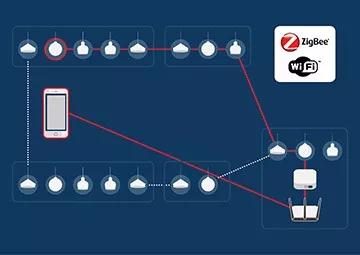New research findings: Short-wave UV light or can slow the spread of influenza
It is reported that hospitals and laboratories often use ultraviolet light to kill bacteria, but this approach has a major drawback, that is, causing harm to humans. As a result, UV light can only be sterilized in unattended operating rooms and in empty laboratory enclosures.
Researchers have now found that shorter wavelengths of germicidal UV light may be harmless to the human body and, according to theory, have developed it into a new tool that can be used in schools, crowded aircraft, food processing plants, and even operating and laboratory laboratories And other places to slow down the spread of the disease.
Ultraviolet light sterilizes bacteria by disrupting the molecular bonds that bind the bacterial genetic material to the protein. Among them, the most commonly used is 254nm light, which contains a short UV wavelength, the so-called class C, however, it can penetrate the skin and eyes, leading to cancer and cataracts and other diseases.
To this end, David Brenner, a physicist from Columbia University Medical Center in New York, led a team that tested far-wave UV light that could not penetrate the surface of the eyes or skin over the past four years. The results show that far short-wave UV light just kill the surface bacteria, did not hurt the experimental rats.
In addition, in a preprint study published on the BioRxiv biodegradation site on December 28, 2017, the researchers pointed out that Brenner and his colleagues conducted the next test to see if UV could solve many public The main health issues that exist at the site are: Plankton.
First, the team aerosolized the virus in the test box and then irradiated the virus with short UV light at a wavelength of 222 nm. As a control, some were not exposed to short UV light. Later, researchers collected liquid samples from the test chamber and spread it in dog kidney cells that were susceptible to flu infection. The results showed that cells that were not exposed to short UV light were able to infect cells and those exposed to short UV light Sample can not.
According to Shawn Gibbs, an industrial hygienist, shortwave UV will have a positive effect on the disruption of the disease if the research is successful. It is known that Shawn Gibbs studied the UV disinfection performance at the Indiana University School of Public Health in Bloomington.
Researchers have now found that shorter wavelengths of germicidal UV light may be harmless to the human body and, according to theory, have developed it into a new tool that can be used in schools, crowded aircraft, food processing plants, and even operating and laboratory laboratories And other places to slow down the spread of the disease.
Ultraviolet light sterilizes bacteria by disrupting the molecular bonds that bind the bacterial genetic material to the protein. Among them, the most commonly used is 254nm light, which contains a short UV wavelength, the so-called class C, however, it can penetrate the skin and eyes, leading to cancer and cataracts and other diseases.
To this end, David Brenner, a physicist from Columbia University Medical Center in New York, led a team that tested far-wave UV light that could not penetrate the surface of the eyes or skin over the past four years. The results show that far short-wave UV light just kill the surface bacteria, did not hurt the experimental rats.
In addition, in a preprint study published on the BioRxiv biodegradation site on December 28, 2017, the researchers pointed out that Brenner and his colleagues conducted the next test to see if UV could solve many public The main health issues that exist at the site are: Plankton.
First, the team aerosolized the virus in the test box and then irradiated the virus with short UV light at a wavelength of 222 nm. As a control, some were not exposed to short UV light. Later, researchers collected liquid samples from the test chamber and spread it in dog kidney cells that were susceptible to flu infection. The results showed that cells that were not exposed to short UV light were able to infect cells and those exposed to short UV light Sample can not.
According to Shawn Gibbs, an industrial hygienist, shortwave UV will have a positive effect on the disruption of the disease if the research is successful. It is known that Shawn Gibbs studied the UV disinfection performance at the Indiana University School of Public Health in Bloomington.


评论
发表评论